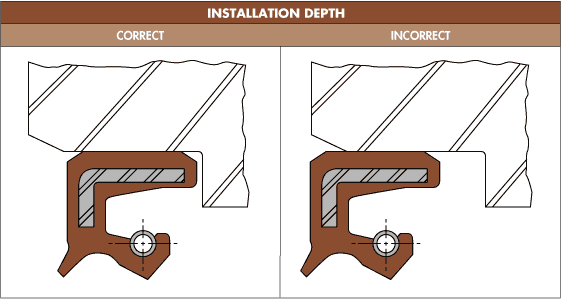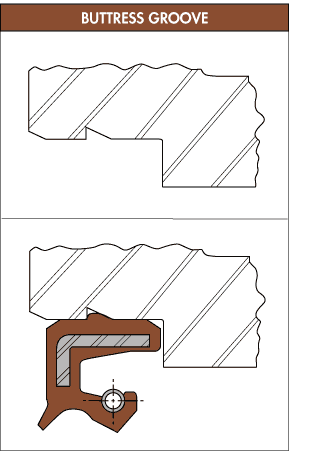|
|

  |
 |
 |
 RUBBER COVERED SEAL INSTALLATION RUBBER COVERED SEAL INSTALLATION
The boreís lead-in chamfer is critical to proper installation of a rubber covered oil
seal. The chamfer acts as a wedge to guide the seal into the bore and must be
30 degrees or less for best results. A chamfer of 45 degrees will act more like a
snow-plow resisting the seal and increasing installation force by more than four
times. This high installation force can also cause a hysteresis in the sealís rubber
cover resulting in the seal springing back after being seated.

Interruptions within the bore, such as snap-ring grooves or cross-holes, require a
30 degree chamfer to provide ease of installation and prevent seal damage.

The seal must always be pressed far enough into the bore to ensure its rubber
outside diameter has completely passed the chamfer. Failure to do so may result
in the seal backing out of the bore.

 USE OF BUTTRESS GROOVE WITH RUBBER COVERED SEALS USE OF BUTTRESS GROOVE WITH RUBBER COVERED SEALS
In applications where a rubber covered seal is desirable and bore depth is limited
or high system pressure exists, the possibility of seals backing out of the bore
should be considered. A bore with a buttress groove will allow the seal to be installed
normally with the sealís outside diameter extruding into the groove. The result will
be ease of assembly with a significantly higher pullout force. This design can
eliminate the need for snap-rings in some applications although testing is required
to ensure proper results.

|
|
|
|






